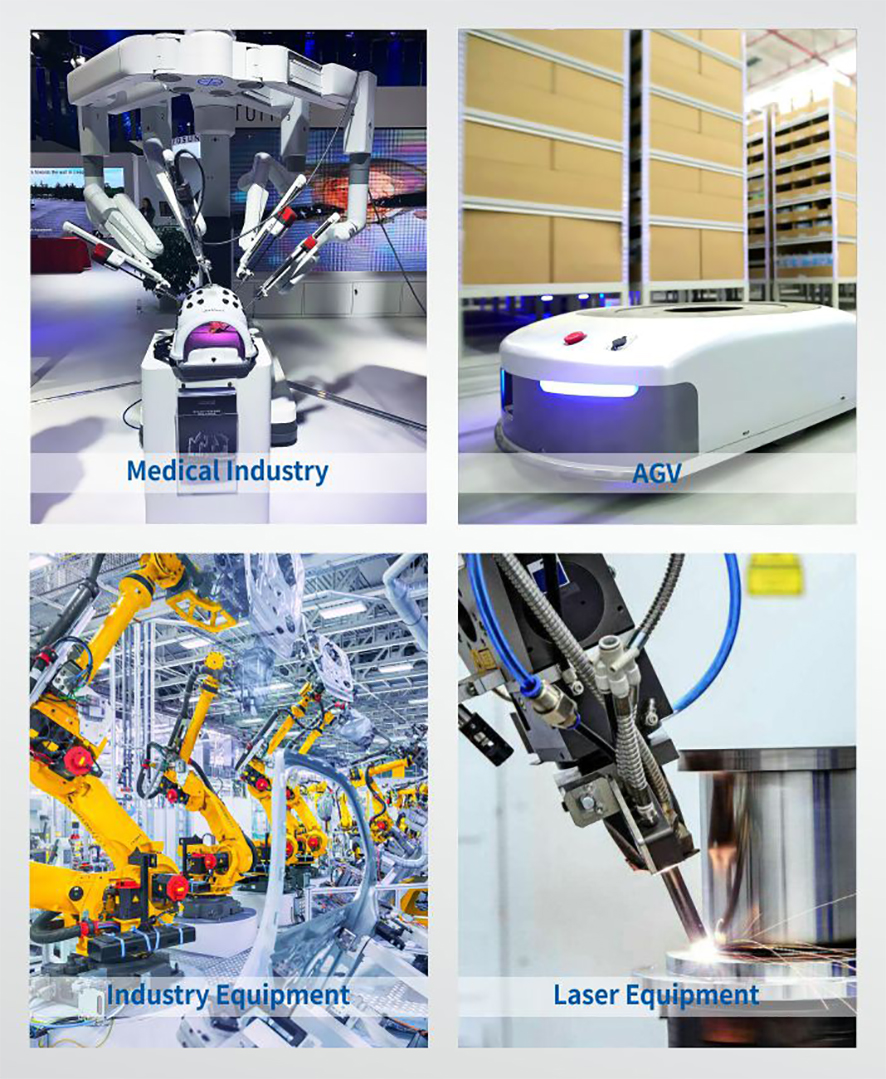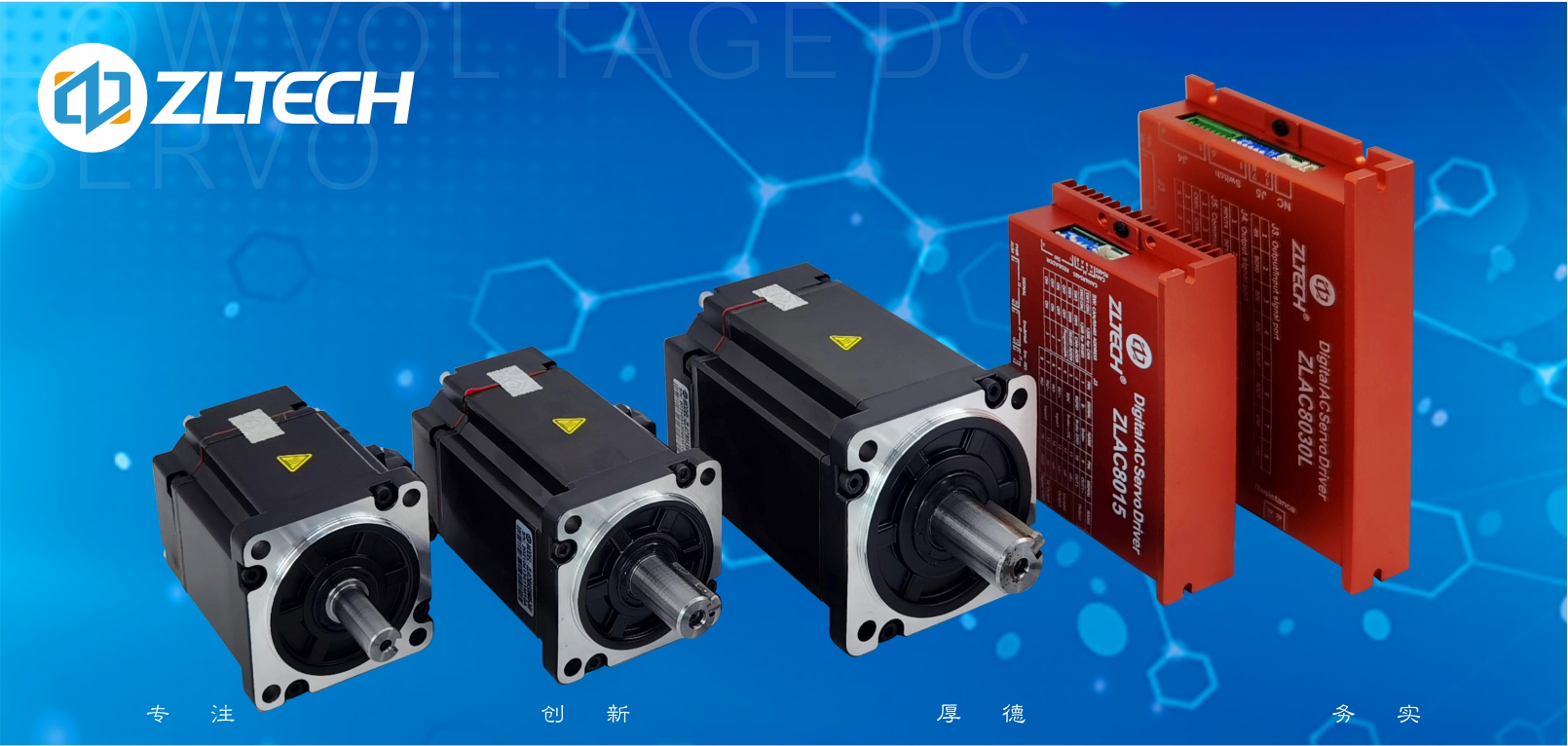Servo driver is an electronic device used to control servo motors, and its principle is based on a feedback control system. Here is a brief working principle:
Input signal: The servo driver receives input signals from the main controller or external sensors, indicating the desired target position, speed, or torque.
Feedback signal: The servo driver obtains feedback signals of actual position, speed, or torque through built-in encoders or sensors, reflecting the current state of the motor.
Error calculation: The servo driver compares the target signal with the feedback signal and calculates the error (the difference between the target value and the actual value).
Control Algorithm: The servo driver uses internal control algorithms such as PID (Proportional, Integral, and Differential) control algorithms to calculate the control signal based on the error signal.
Control signal output: After being amplified by a power amplifier, the control signal is cascaded to the driving motor through power to control the speed, position, or torque of the motor.
Feedback closed-loop: The servo driver continuously obtains feedback signals and compares them with the target signal, adjusting the control signal to gradually reduce errors and achieve accurate control.
By continuously adjusting the control signal, the servo driver can enable the motor to move according to the predetermined target, achieving precise position control, speed control, or torque control. The principle of feedback control makes servo drives widely used in many automation applications, such as industrial machinery, robots, automated production lines, and so on.
The accuracy of a servo driver depends on multiple factors, including the resolution of the encoder, the accuracy of the control algorithm, and the sensitivity of the sensor. In general, servo drives can achieve high accuracy, and the following are some common accuracy indicators:
Position accuracy: Position accuracy refers to the deviation of the servo motor when reaching the target position. It can be measured by the resolution of the encoder, and the higher the resolution of the encoder, the higher the positional accuracy.
Speed accuracy: Speed accuracy refers to the difference between the actual speed achieved by the servo motor at the set target speed and the target speed. It is influenced by control algorithms and feedback systems.
Acceleration accuracy: Acceleration accuracy refers to the difference between the actual acceleration achieved by the servo motor under the set target acceleration and the target acceleration. It is also influenced by control algorithms and feedback systems.
Torque accuracy: For certain servo driver applications, such as robotic arms or robots, torque accuracy is very important. It refers to the difference between the actual torque provided by the servo motor and the set target torque.
It should be noted that the accuracy of servo drives is also affected by other factors, such as the accuracy of mechanical transmission systems, load characteristics, environmental temperature, etc. In order to improve the accuracy of servo drives, higher resolution encoders, optimized control algorithms, improved sensors and feedback systems can be used, and correct installation and calibration can be ensured.
Shenzhen Zhongling Technology (www.zlingkj. com) is a long-term R&D and manufacturing enterprise that provides servo drives and wheel hub motors for robot enterprises. Since the launch of the robot servo drive series products, the products have accompanied thousands of enterprises with customers in over 100 countries around the world, leading the industry. And we have always adhered to the concept of continuous innovation to bring the best products to customers, with a complete research and development sales system to provide customers with the best purchasing experience. We hope to develop together with you and move forward together.
Post time: Jul-11-2023


